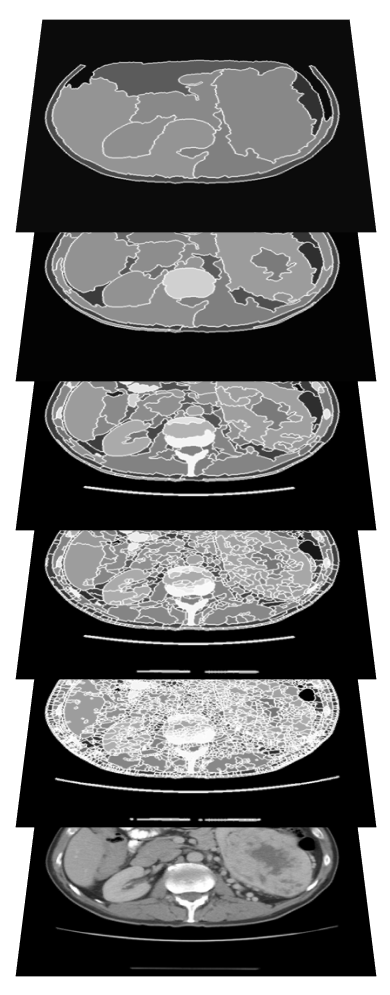Stuart Golodetz, Chris Nicholls, Irina Voiculescu and Stephen Cameron
Abstract
The waterfall transform is a hierarchical segmentation technique based on the watershed transform from the field of mathematical morphology. Watershed-based techniques are useful in numerous fields ranging from image segmentation to cell-and-portal generation for games. The waterfall helps mitigate the problem of over-segmentation that commonly occurs when applying the basic watershed transform. It can also be used as a core part of a method for constructing image partition forests, a tree-based, multi-scale representation of an image. The best existing method for the waterfall is fast and effective, but our experience has been that it is not as straightforward to implement as might be desired. Furthermore, it does not deal consistently with the issue of non-minimal plateaux. This paper therefore proposes two new tree-based methods for the waterfall. Both are easier to implement than the existing state-of-the-art, and in our implementations were both faster by a constant factor. The Simplified Waterfall (SW) method focuses on simplicity and ease of implementation; the Balanced Waterfall (BW) method focuses on robust handling of non-minimal plateaux. We perform experiments on both 2D and 3D images to contrast the new methods with each other and with the existing state-of-the-art, and show that both achieve a noticeable speed-up whilst producing similar results.
